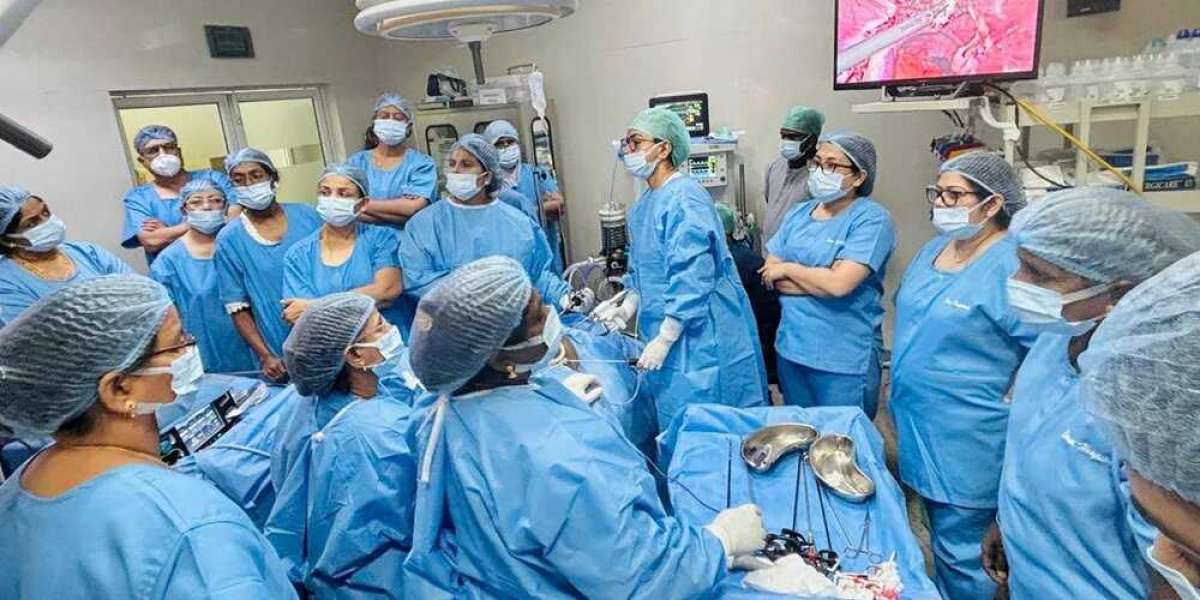Introduction
Total Laparoscopic Hysterectomy (TLH) is a minimally invasive surgical procedure that removes the uterus through small abdominal incisions. It is commonly performed for conditions like fibroids, endometriosis, and abnormal uterine bleeding. While TLH offers a faster recovery compared to open surgery, effective pain management and healing strategies are essential for a smooth recovery.
Understanding Pain After a Laparoscopic Hysterectomy
Postoperative pain after a Total Laparoscopic Hysterectomy in Chennai varies based on individual pain tolerance, surgical complexity, and overall health. Pain is typically localized in the lower abdomen, pelvic region, and sometimes in the shoulders due to residual carbon dioxide gas used during the surgery.
Common types of pain include:
- Incisional pain: Mild to moderate pain at the incision sites.
- Gas pain: Shoulder and upper abdominal discomfort due to CO2 retention.
- Pelvic discomfort: Deep cramping sensations as the body heals internally.
Proper pain management techniques can significantly enhance recovery and improve patient comfort.
Effective Pain Management Strategies
1. Medications for Pain Control
- Prescription pain relievers: Doctors may prescribe NSAIDs or opioids for short-term relief.
- Over-the-counter (OTC) medications: Ibuprofen and acetaminophen help manage mild to moderate pain.
- Gas relief medications: Simethicone can reduce post-surgical bloating and discomfort.
2. Managing Gas-Related Pain
- Walking frequently encourages the dissipation of CO2 gas trapped in the abdomen.
- Gentle abdominal massage can relieve bloating and discomfort.
- Drinking warm liquids and herbal teas aids digestion and reduces gas pain.
3. Incision and Wound Care
- Keep incision sites clean and dry to prevent infection.
- Follow the doctor’s instructions on dressing changes and showering.
- Avoid tight clothing that puts pressure on the incision sites.
4. Lifestyle Adjustments for Better Recovery
- Rest and sleep: Prioritize rest to allow the body to heal.
- Hydration and nutrition: Eat protein-rich foods, fiber, and stay hydrated to aid tissue repair.
- Avoid heavy lifting: Refrain from lifting objects over 5 kg for at least six weeks.
Healing Timeline and Recovery Milestones
Week 1: Initial Recovery
- Pain and swelling are most prominent.
- Light movement is encouraged to prevent blood clots.
- Follow-up appointment scheduled to assess healing progress.
Weeks 2-4: Gradual Healing
- Pain decreases significantly but may persist mildly.
- Patients can resume light household activities.
- Incisions start to heal, reducing the risk of infection.
Weeks 4-6: Regaining Strength
- Most pain subsides, with only occasional discomfort.
- Gradual return to non-strenuous work and normal activities.
- Pelvic exercises can begin under medical supervision.
After 6 Weeks: Full Recovery
- Complete healing occurs in most cases.
- Patients can resume exercise, driving, and daily routines.
- Final consultation to ensure no complications.
When to Seek Medical Attention
While most patients recover without issues, immediate medical care is needed if the following occur:
- Severe or worsening pain not relieved by medication.
- Excessive bleeding or unusual vaginal discharge.
- Signs of infection such as fever, redness, or pus at incision sites.
- Difficulty urinating or persistent nausea and vomiting.
Conclusion
Proper pain management and recovery strategies play a vital role in ensuring a smooth healing process after a Total Laparoscopic Hysterectomy in Chennai. Following post-operative guidelines, maintaining a healthy lifestyle, and adhering to prescribed medications contribute to faster recovery. Firm Hospital is one of the best women’s healthcare hospitals, offering expert care and personalized treatment plans to ensure the best outcomes for every patient.








